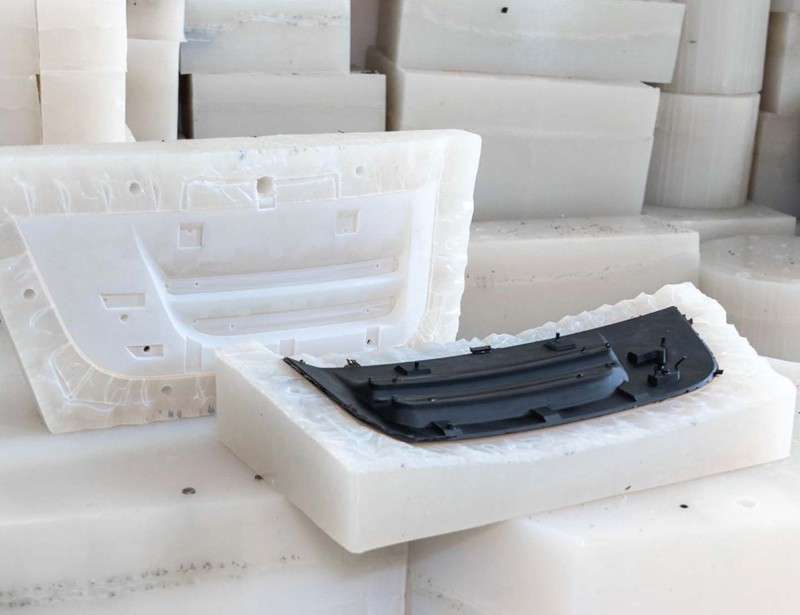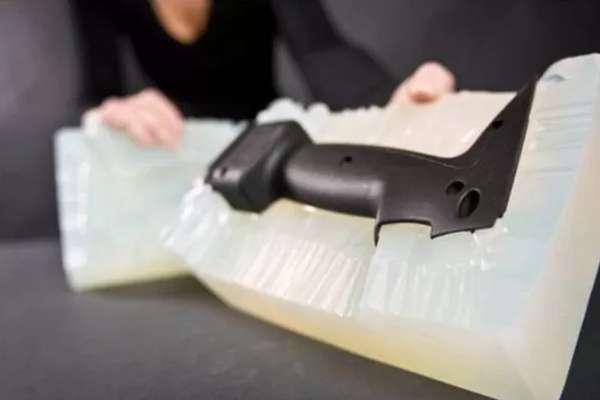Vacuum casting is commonly used with polyurethane resins, which are flexible, durable, and can mimic the properties of various plastics. Some plastics can be customized to have specific qualities such as being clear, flexible, or heat-resistant.
“Precision casting for flawless prototypes.” Vacuum Casting delivers high-quality prototypes and production parts with exceptional detail and consistency. XC Machining offers reliable and cost-effective solutions tailored to your needs, ensuring superior results every time.

Vacuum casting is a precise manufacturing technique that uses polyurethane resins and silicone molds to create accurate replicas of master patterns. By operating under vacuum conditions, this method eliminates air bubbles, ensuring exceptional detail and surface quality. It is a cost-effective alternative to injection molding, particularly suited for prototypes, small to medium production runs, and intricate designs.
At XC Machining, our vacuum casting services deliver high-quality results with shorter lead times, combining precision with versatility. The process allows for customization, including clear or colored finishes, specialized coatings, and the integration of functional inserts.
In our facility, you have a variety of machines for part production, including CNC turning lathes, milling machines, injection molding equipment, state-of-the-art 3D printing technology, and more.
At XC Machining, we try to ensure your choice is not limited, which is why we offer over 60 materials for you to choose from for your prototypes and products.
In-depth service engineers with the knowledge to address your manufacturing inquiries are available from XC Machining. Our engineers are always on the ground to offer valuable advice.
We offer a range of surface treatments and custom finishes on solid metal and plastic parts, including anodizing, spray painting, vapor polishing, sandblasting, silk screening, etc.
We use high-quality vacuum casting material at XC Machining. Although polyurethane is the only available material for vacuum casting. There are good ones and bad ones out in the market. At XC Machining, we always choose good materials made by good material supplier.
Polyurethane has many kinds. There are materials similar to PMMA, PC, ABS, Nylon, and more. XC Machining is here to help you choose the best one for your each project.

Brushing is a technique that utilizes abrasive pads or brushes to add a finish to the surface of a material. It is commonly used on metal surfaces to enhance their visual appeal. This method is especially effective on stainless steel, creating either a linear or circular pattern on the surface.
Black oxide coating is a popular choice for enhancing the surface of steel and iron. This finish not only provides a visually appealing dark surface, but also offers excellent wear resistance. Additionally, the black oxide coating can enhance the lubricity and durability of the treated surface, making it an ideal option for various applications.
Passivation is a common process used to enhance the corrosion resistance of stainless steel by removing iron impurities and forming a protective oxide layer. This helps to improve the durability and performance of stainless steel in tough environments.
Paint serves as a surface coating that is effective on a wide range of materials, offering both aesthetic enhancement and protection against corrosion. It is available in numerous color options, making it suitable for application on metals, polymers, wood, and various other substrates.
Enhance the shine and smoothness of your materials by utilizing polishing techniques. By using abrasives such as buffing wheels or polishing chemicals, you can elevate the reflectivity and overall aesthetic of metals, resulting in a stunning mirror-like finish.
Alodine coating, also known as chromate conversion coating, is widely used on metals like aluminum. It serves as an excellent primer for paint or powder coatings, providing a durable and corrosion-resistant finish. By creating a thin layer of protection, it enhances the bond between subsequent coatings, ensuring long-lasting results.

Brushing is a technique that utilizes abrasive pads or brushes to add a finish to the surface of a material. It is commonly used on metal surfaces to enhance their visual appeal. This method is especially effective on stainless steel, creating either a linear or circular pattern on the surface.
Black oxide coating is a popular choice for enhancing the surface of steel and iron. This finish not only provides a visually appealing dark surface, but also offers excellent wear resistance. Additionally, the black oxide coating can enhance the lubricity and durability of the treated surface, making it an ideal option for various applications.
Passivation is a common process used to enhance the corrosion resistance of stainless steel by removing iron impurities and forming a protective oxide layer. This helps to improve the durability and performance of stainless steel in tough environments.
Paint serves as a surface coating that is effective on a wide range of materials, offering both aesthetic enhancement and protection against corrosion. It is available in numerous color options, making it suitable for application on metals, polymers, wood, and various other substrates.
Enhance the shine and smoothness of your materials by utilizing polishing techniques. By using abrasives such as buffing wheels or polishing chemicals, you can elevate the reflectivity and overall aesthetic of metals, resulting in a stunning mirror-like finish.
Alodine coating, also known as chromate conversion coating, is widely used on metals like aluminum. It serves as an excellent primer for paint or powder coatings, providing a durable and corrosion-resistant finish. By creating a thin layer of protection, it enhances the bond between subsequent coatings, ensuring long-lasting results.
XC Machining is a trusted partner for industries demanding complexity, reliability and precision. Our expensive experience in producing millions of high quality components brings unmatched expertise to every project.
Our services cover a diverse range of applications to ensure that we meet the unique needs of each sector with great care.
XC Machining supports the automotive industry with cutting-edge CNC machining solutions, enabling the production of complex parts that drive efficiency
For the semiconductor industry, XC Machining offers CNC machining services that meet the high precision demands necessary for manufacturing components
Our CNC machining services are pivotal in the energy sector, where precision and durability are essential. XC Machining supports the
XC Machining is a trusted partner in the industrial machinery sector, offering CNC machining solutions that ensure the robust and
XC Machining delivers precision machining solutions for the electronics industry, producing intricate components that meet the exacting standards required for
XC Machining offers specialized CNC machining services for the communications industry, crafting precision parts that are vital for the infrastructure
Get reliable vacuum casting services for high-quality prototypes and production parts at competitive prices. XinCheng offers highly detailed casting parts with consistent quality.
Sheet metal fabrication uses cutting, bending, and forming techniques to create precision metal components for industrial, commercial, and manufacturing applications.
Leverage our injection molding services for high-quality prototypes and custom parts, with expert support, competitive pricing, and faster production cycles for reliable, efficient results.
Vacuum casting is a blend of both preciseness and craftsmanship, which transforms a single master model into as many perfect replicas as it can handle with meticulousness, expediency and an exceptional surface finish.
A high quality master model is produced typically by CNC machining or 3D printing and the first step is to start with this master. It is used as a model in order to have all the minute details that will be replicated in the final sections.
The master model is cast in a casting frame and an ample amount of liquid silicon rubber is added around the model. After the silicone is cured, it is slit open to create a mold that will give a hole with an anatomy that perfectly fits that of the master model.
Reconstruction of the silicone mold halves is done, and then inserted into a vacuum chamber. This is to eliminate any air entrapment so that the resin would fill in every detail with no bubbles and voids.
It is poured into the mold when mixed with a polyurethane resin and is under vacuum conditions. The Vacuum facilitates consistency in the spread of the resin with sharp edges and fine textures perfectly captured.
The loaded mold is put into an oven where it is heated uncontrollably at a normal range of 2 to 4 hours. It also enables the resin to be hardened and develop desired strength and durableness.
The silicone mold is opened slowly after it has been cured in order to retrieve the finished part. The molds are capable of approximately 15-25 parts before it will lose its accuracy.
This component is mechanically cleaned and then cut, as necessary, and any required decorative effects to surfaces, thus ready to be put into functional service, or be exhibited.
On short runs, vacuum casting is able to produce parts with injection-mold quality but depending on the effect of elements such as mold wear and resin character, cost, accuracy, and the production time are vulnerable.
Vacuum casting Silicone molds typically have a limited life, making 1525 parts at most, until they lose accuracy. The wear of the mold surface has a long-term drawback on the level of detail and the quality of surface finish. This renders it most suitable for small-run production.
Polyurethane resins are most frequently deployed in vacuum casting, and are able to recreate the look and feel of typical plastics. Nevertheless, they are unable to emulate the mechanical behaviors of the high-performance engineering materials, such as PEEK or fiber-reinforced polymers, which restrict their applicability to high-stress practices.
Polyurethane resins contract during curing by about 0.2 0.5 percent. Failure to consider this may lead to the production of metal parts that are marginally undersized or out of specification, where they have to be corrected in the master design.
Silicone molds are reused and therefore, fine textures, and sharp edges wear down. This information loss operates on the practical accuracy of parts, as well as their aesthetic quality, particularly where a design depends upon complex patterning.
Complex components would need extra mold impressions, vacuum series or finishing procedure. Such additional operations may increase lead times, especially in the case of complex shapes, or in complex assembled parts.
What kinds of things can be vacuum cast?
Vacuum casting is commonly used with polyurethane resins, which are flexible, durable, and can mimic the properties of various plastics. Some plastics can be customized to have specific qualities such as being clear, flexible, or heat-resistant.
Why is vacuum casting a good way to make prototypes?
Vacuum casting is an excellent choice for prototyping because it offers high accuracy, quick turnaround times, and is cost-effective.
Is vacuum casting good for parts that will be used?
Yes, vacuum casting can be used to produce parts that are intended for real-world use. The parts have great surface finishes and excellent properties, making them suitable for high-quality applications.
What kinds of businesses can use vacuum casting?
Vacuum casting is particularly useful in automotive, aerospace, consumer electronics, and healthcare, where flexibility and quick production cycles are essential for innovation.
How long does it take to create a prototype using vacuum casting?
The time required to create a prototype using vacuum casting depends on the complexity of the design and the material used. However, one of the main advantages of vacuum casting is that it can produce prototypes within a few days.
Can vacuum casting be used for large-scale production?
While vacuum casting is primarily used for prototyping and small-to-medium production runs, it can be used for limited series production. However, for mass production, other methods like injection molding might be more cost-effective and efficient.
Copyright © 2025 XC Machining
Copyright © 2025 XC Machining